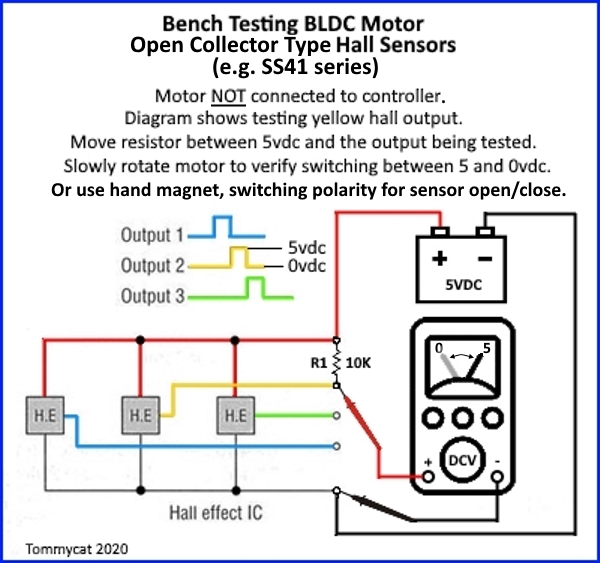dick slessig
100 µW
- Joined
- Feb 3, 2021
- Messages
- 8
Hello All,
Newbie here Looking for some troubleshooting advice. I've got a brand new Bafang front hub motor that spun out of the front dropouts, damaging the wiring harness in the process and resulting in the dreaded error code 8 coming up. After much poking around on the interweb and pointless interactions with the technical support team at BafgangUSA direct, I opened the motor up, cut out the damaged section of wiring and resoldered. Upon reassembly, I came up with the same result. Testing the connections with the multimeter, I found that the green sensor terminal was not switching on and off as the motor rotated. I replaced the green hall sensor no effect. All of the hall sensors appear to be working, switching on and off as the motor is turned, but the voltage at the main terminal of the small green wire doesn't change. In other words, switching at the switch, but not at the terminal. I've attached a handy info-graphic to illustrate the situation. Any advice is welcome.
Cheers
Newbie here Looking for some troubleshooting advice. I've got a brand new Bafang front hub motor that spun out of the front dropouts, damaging the wiring harness in the process and resulting in the dreaded error code 8 coming up. After much poking around on the interweb and pointless interactions with the technical support team at BafgangUSA direct, I opened the motor up, cut out the damaged section of wiring and resoldered. Upon reassembly, I came up with the same result. Testing the connections with the multimeter, I found that the green sensor terminal was not switching on and off as the motor rotated. I replaced the green hall sensor no effect. All of the hall sensors appear to be working, switching on and off as the motor is turned, but the voltage at the main terminal of the small green wire doesn't change. In other words, switching at the switch, but not at the terminal. I've attached a handy info-graphic to illustrate the situation. Any advice is welcome.
Cheers





